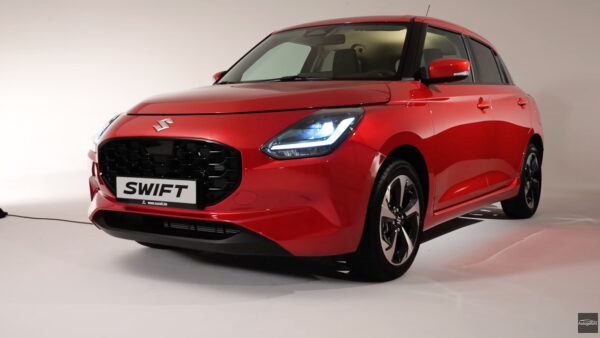
When compared to complicated and expensive parallel and series-parallel hybrid architectures, series hybrid is simplest and cost-effective
In the push towards electric mobility, Tata Motors currently leads the game in Indian car market. Other players like MG, Hyundai and Citroen are operative in mainstream electric car market as well. Even though Maruti Suzuki is joining India’s electric car club, the company is taking much larger strides in hybridization of ICE powertrains.
Maruti Swift, Baleno, Fronx To Get Hybrid Tech
Instead of diving into EVs head first, Maruti Suzuki and Toyota are looking at hybrid powertrains as the more viable and cost-effective alternatives. In India, Maruti Suzuki and Toyota currently lead hybrid vehicles segment (self-charging hybrids with electric propulsion marketed as strong hybrids) with Grand Vitara, Hyryder, Innova Hycross, Invicto and a few Toyota imports.
Maruti Suzuki is keen on expanding its hybrid powertrain-equipped portfolio with a 7-seater version of Grand Vitara. However, a recent report mentions that Maruti Suzuki is considering hybridization of its more mainstream products like Swift, Dzire, Fronx, Baleno and other upcoming Maruti Suzuki vehicles.
No. Maruti is not just plonking its current Toyota-derived 1.5L 3-cylinder Intelligent Hybrid powertrain in these vehicles and calling it a day. Instead, the report mentions Maruti Suzuki is developing its own series hybrid powertrain, coupled with the new Z12 3-cylinder engine (Z12e with hybrid setup).

Series hybrid options are significantly simpler to develop, when compared to parallel and series-parallel hybrid architectures. The report mentions Maruti Suzuki will go for a small 2 kWh battery pack and the engine will solely act as a range extender, generating electricity to charge batteries via an efficient generator.
How does it all work?
If we take series hybrids in general, we have quite a few examples like BMW i3, Chevrolet Volt and its luxury counterpart Cadillac ELR, and others. More recently, we have seen series hybrid in Maxda MX-30 (new one with suicide rear doors). All of these have large batteries with a small range extending petrol engine.
However, Maruti Suzuki is likely to be going for a model similar to what we see in Nissan Note. This vehicle uses a 1.5 kWh battery and an electric motor for propulsion and a 1.2L petrol engine for recharging this small battery. Nissan claims a theoretical 1,300 km range from a 47L fuel tank that ends up to be 27.65 km/l from this series hybrid system.
We hope Maruti Suzuki is using a more efficient generator with less energy loss while converting mechanical energy of the engine to electricity. Keeping the overall hybrid architecture system simple for lower costs seems to be the mantra here. We will have to wait for the launch to see how well it is implemented. Something that is expected to happen in the next couple of years.
Even though expensive and complicated, a PHEV setup with a sizeable battery (10 kWh+) running on series-parallel hybrid architecture with an IC engine driving the wheels is still the most efficient. Especially where total system efficiency is concerned, as per one of the projects during my Automobile Engineering degree.

